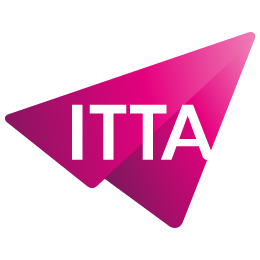Lean Management is a management approach that promotes continuous improvement. It relies on proven principles to optimize processes, reduce waste, and strengthen overall performance. This method, used across many industries, is based on gradual adjustments that create a lasting impact on quality and efficiency.
Lean Management training provides a clear and structured vision for managing projects with greater discipline. It helps participants better understand the key levers for optimization in design, development, and production. Learners are introduced to practical tools such as process mapping, the 5S method, and visual management. These practices foster transparency and improve team collaboration. By applying them, organizations can lower costs while increasing customer satisfaction.
Module 1: Introduction and key principles
Module 2: Components of Lean Engineering
Module 3: Development through workshops
Lean Management is based on a simple yet powerful philosophy: every process can be optimized. Unlike one-off cost-cutting methods, this approach aims to establish a long-lasting culture of continuous improvement. The goal is to eliminate everything that does not add value for the customer, whether it is wasted time, unnecessary resources, or organizational complexity.
This approach not only helps reduce waste but also streamlines communication and strengthens overall efficiency. Companies that adopt this method often see improved product quality, shorter lead times, and greater satisfaction among both clients and employees.
Lean Management is not limited to theoretical concepts. It provides a set of practical tools that make project management and team leadership more effective. Among these, process mapping is used to visualize key steps and identify bottlenecks. The application of the 5S method and visual management helps create a clearer and more efficient work environment.
Other methods, such as modular design, Value Engineering, or Design for Manufacturing, go further in optimization. These practices help design products that are better adapted, more competitive, and aligned with customer expectations.
Adopting Lean Management goes beyond simply improving productivity. It also strengthens the company’s overall strategy. By making processes more agile, the organization can quickly adapt to market changes and respond effectively to customer needs.
This approach also fosters innovation. By removing unnecessary steps and encouraging team creativity, companies can dedicate more time to developing new ideas and turning them into practical solutions. Lean Management thus becomes a true driver of transformation and growth.
The success of a Lean initiative relies on the involvement of all stakeholders. Managers, project leaders, and Lean experts play an essential role in supporting change. Their mission is to raise awareness among teams, create a positive dynamic, and encourage active participation.
Transparency is also a critical factor. Thanks to visual management, information flows more easily, and everyone can monitor project progress. This visibility enhances collaboration and strengthens employee commitment to shared goals.
Implementing a Lean Management strategy delivers tangible and measurable results. Companies often achieve significant reductions in operating costs, improvements in product quality, and better control over timelines. These benefits go beyond financial indicators. They also lead to greater customer satisfaction and a more positive work environment.
By following a long-term perspective, this approach helps build more resilient organizations, capable of facing change with confidence.
What is Lean Management?
Lean Management is a management method aimed at eliminating waste and continuously improving an organization’s processes.
What are the main benefits of Lean Management?
It reduces costs, improves product quality, shortens lead times, and strengthens customer satisfaction.
Who is Lean Management training for?
It is designed for directors, managers, project leaders, design office managers, and Lean experts seeking to optimize their practices.
What tools are used in Lean Management?
Some of the most widely used are process mapping (VSM), the 5S method, visual management, Value Engineering, and Design for Manufacturing.
Is Lean Management applicable outside of industry?
Yes, it can be applied in many sectors such as services, IT, healthcare, or public administration—anywhere processes can be improved.

Nous utilisons des cookies afin de vous garantir une expérience de navigation fluide, agréable et entièrement sécurisée sur notre site. Ces cookies nous permettent d’analyser et d’améliorer nos services en continu, afin de mieux répondre à vos attentes.
Monday to Friday
8:30 AM to 6:00 PM
Tel. 058 307 73 00
ITTA
Route des jeunes 35
1227 Carouge, Suisse
Monday to Friday, from 8:30 am to 06:00 pm.